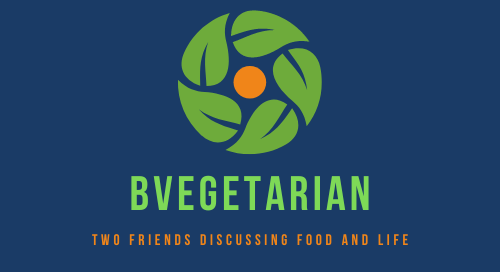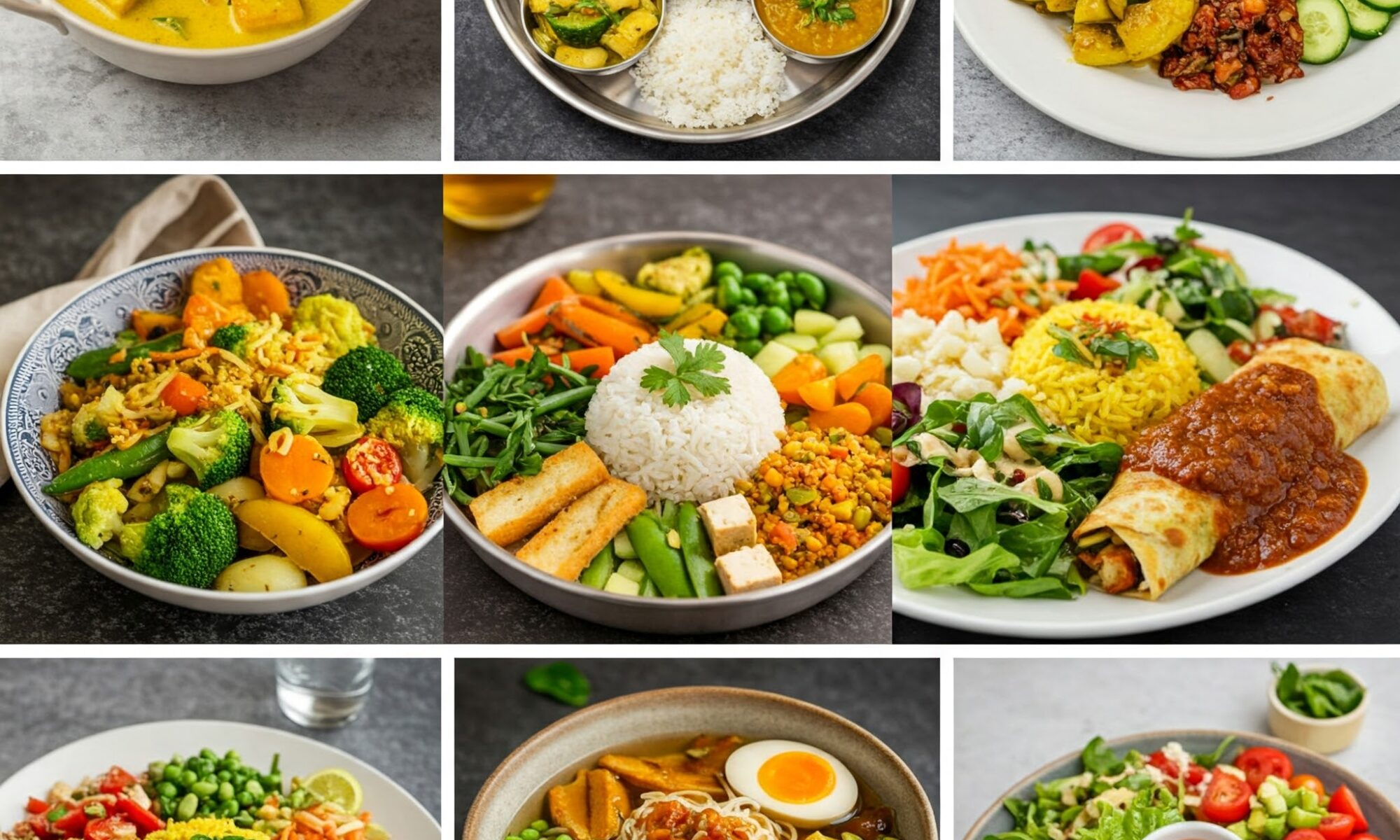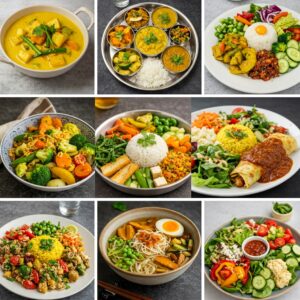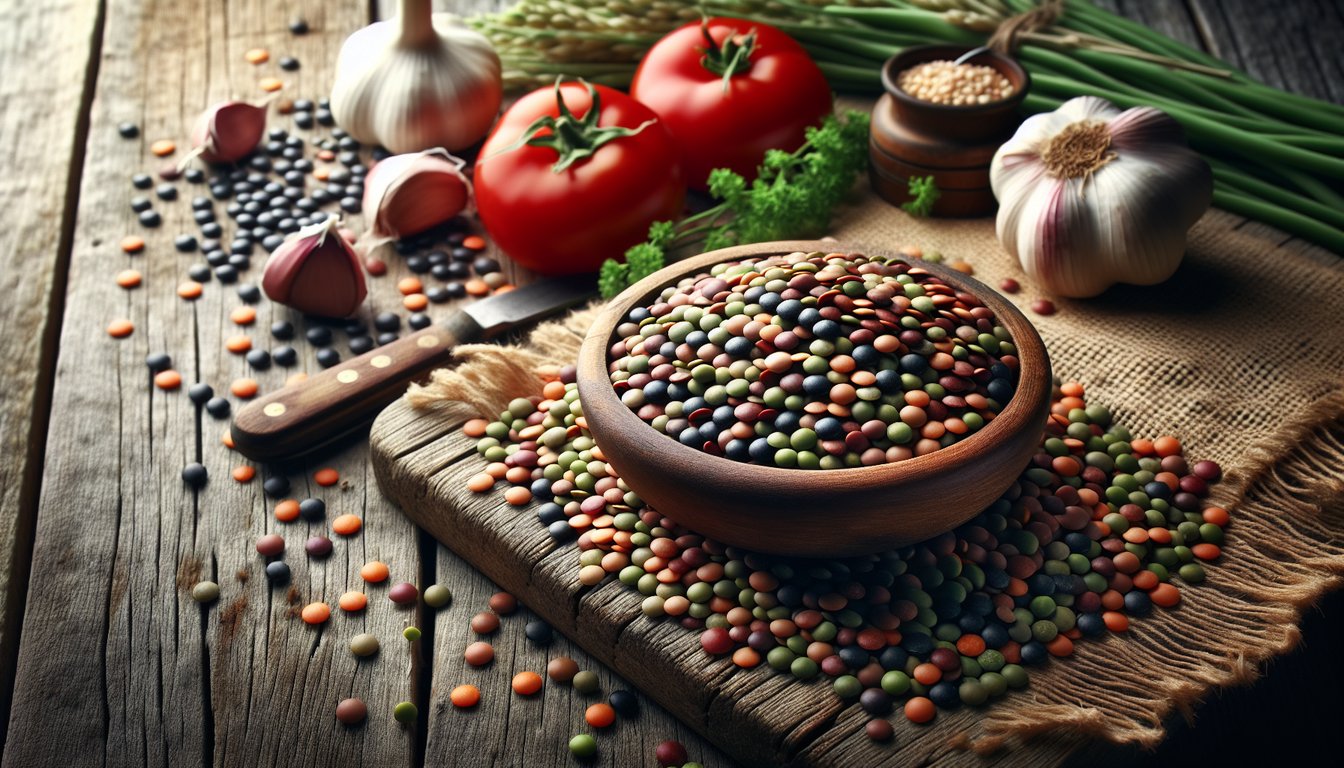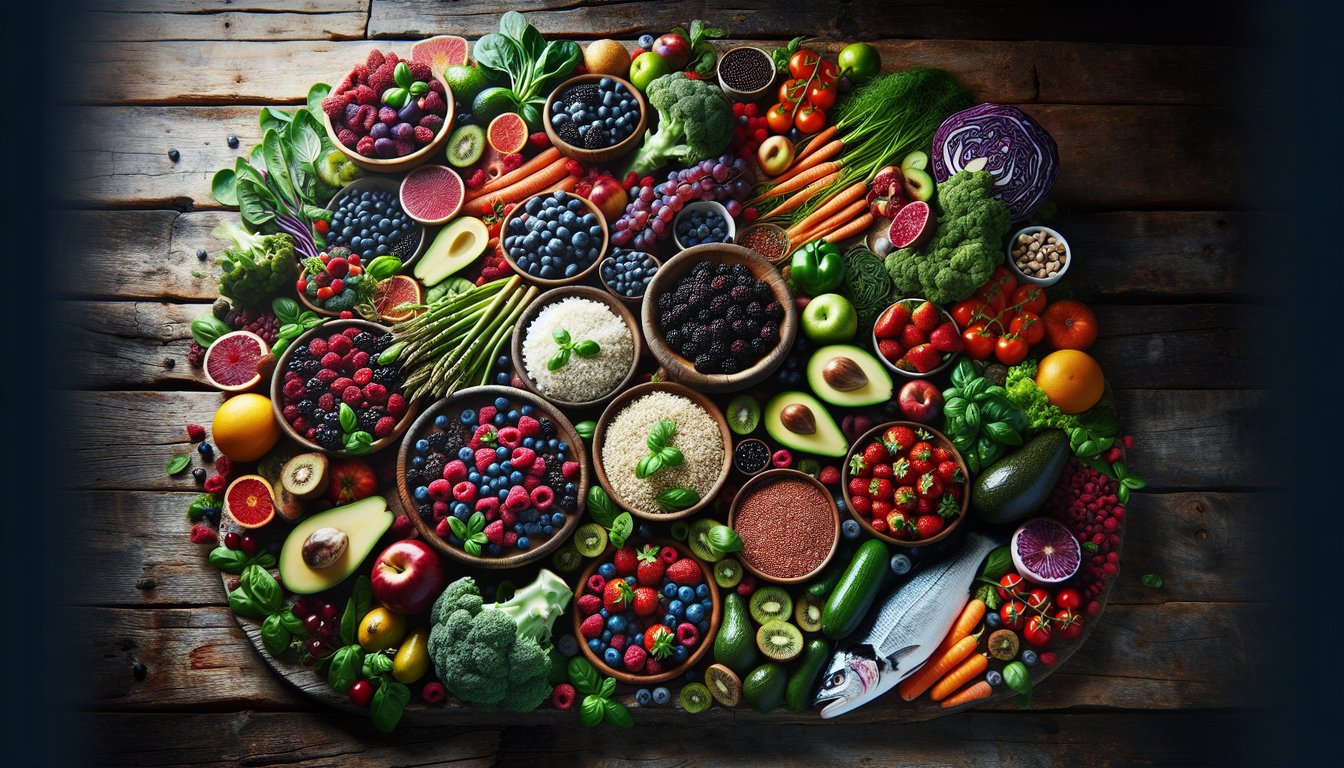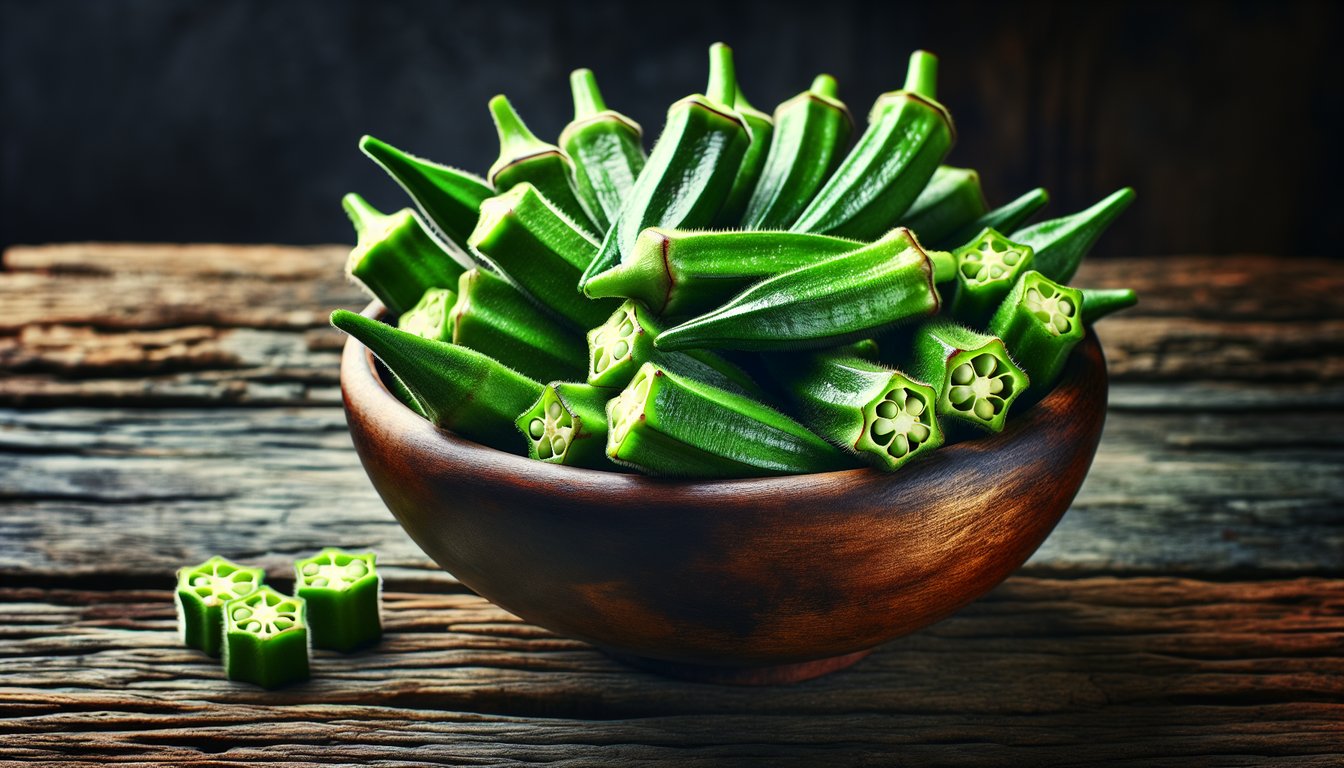When one thinks of tofu, the image that often comes to mind is a plain, white block of soy goodness – a blank slate in the culinary arts. However, this versatile ingredient has been a staple in various international cuisines for centuries, finding its way into a plethora of dishes that tantalize taste buds across the globe. From bustling street markets of Asia to the avant-garde restaurants of Europe, tofu’s transformative nature allows it to soak up flavors and complement a myriad of ingredients, making it a favorite among chefs and home cooks alike.
The History of Tofu
Tofu, also known as bean curd, has a long and storied history that dates back over 2,000 years to ancient China during the Han Dynasty. Legend has it that tofu was accidentally discovered when a Chinese cook curdled soy milk by adding nigari (magnesium chloride), a coagulant derived from seawater. Over time, this discovery spread throughout East Asia, becoming a staple in the diets of various cultures, including Japan, Korea, and Vietnam. Tofu’s integration into these diverse cuisines is a testament to its versatility and adaptability. In Japan, tofu is known as “tofu” and is an integral part of the traditional diet, featuring prominently in dishes such as miso soup and agedashi tofu. Korea’s “dubu” and Vietnam’s “dau phu” also highlight tofu’s importance in regional culinary traditions. Its journey from a simple soy product to a global health food phenomenon illustrates its enduring appeal and nutritional value.
The Manufacturing of Tofu
The process of making tofu involves several key steps that transform soybeans into the versatile and nutritious food we enjoy today. It begins with soaking dried soybeans in water to rehydrate them. Once softened, the soybeans are ground into a slurry and cooked. This mixture is then filtered to separate the soy milk from the okara, the fibrous pulp. The soy milk is heated and a coagulant, typically nigari or calcium sulfate, is added to curdle the milk. The curds are then pressed to remove excess whey, forming blocks of tofu. The firmness of the tofu can be controlled by adjusting the pressing time and pressure, resulting in different textures, from silken to extra firm. Modern manufacturing processes have mechanized and streamlined these steps, allowing for large-scale production while maintaining the traditional methods that ensure high quality and consistency.
The Uses of Tofu
Tofu’s mild flavor and diverse textures make it a versatile ingredient in a wide range of dishes across various cuisines. In Asian cuisine, it is commonly used in soups, stir-fries, and stews. Silken tofu is often blended into soups like Korean “soondubu jjigae” or used in desserts due to its creamy consistency. Firm and extra-firm tofu are ideal for stir-frying, grilling, or baking, as they hold their shape well and absorb flavors from marinades and spices. Beyond its traditional uses, tofu has become a popular meat substitute in Western vegetarian and vegan diets, providing a high-protein, low-fat alternative to animal products. It can be crumbled to mimic ground meat, sliced and marinated for “steaks,” or blended into smoothies and sauces. The health benefits of tofu, including its high protein content, low calorie count, and rich supply of essential amino acids and minerals, further underscore its growing popularity as a nutritious and adaptable food choice.
Asia: The Tofu Trailblazer
Tofu, or bean curd, has its roots deeply embedded in Asian gastronomy. It’s no surprise that some of the most innovative uses of tofu can be found here.
- Mapo Tofu from China: This Sichuan classic dish combines soft tofu with spicy chili and bean paste, creating a fiery sauce that is both numbing and addictive. As Serious Eats explains, “The best mapo tofu is powerfully spicy with both conventional ‘heat’ and the characteristic ‘málà’ (numbing spiciness) flavor of Sichuan cooking.”
- Agedashi Tofu from Japan: A light and crisp exterior gives way to the silken texture of tofu inside when it’s prepared in the agedashi style. This dish is then served in a dashi-based broth, presenting a delicate umami flavor that Just One Cookbook captures so well in their traditional recipe.
- Sundubu-jjigae from Korea: This hot and spicy stew features uncurdled tofu as its centerpiece. Known for its comforting qualities and rich, hearty flavor profile, it’s a popular dish highlighted by Maangchi, a well-known source for authentic Korean recipes.
The Americas: Tofu Without Borders
Tofu’s journey doesn’t end in Asia. Its versatility has allowed it to travel across oceans and integrate into the diverse cuisines of the Americas, where it is reinvented in myriad forms.
· Buffalo Tofu Wings
Ingredients:
– 1 block firm tofu, pressed and cut into bite-sized pieces
– 1/2 cup all-purpose flour (or gluten-free flour)
– 1/2 cup unsweetened plant-based milk (such as almond or soy milk)
– 1 cup breadcrumbs (panko works well)
– 1/2 teaspoon garlic powder
– 1/2 teaspoon onion powder
– Salt and pepper to taste
– 1/2 cup buffalo sauce
– 2 tablespoons vegan butter, melted
– Fresh celery sticks and vegan ranch dressing for serving
Instructions:
- Preheat the oven to 425°F (220°C). Line a baking sheet with parchment paper.
- Set up a breading station: place the flour in one bowl, plant-based milk in a second bowl, and breadcrumbs mixed with garlic powder, onion powder, salt, and pepper in a third bowl.
- Dip each tofu piece into the flour, then the plant-based milk, and finally coat it with the breadcrumb mixture. Place the breaded tofu pieces on the prepared baking sheet.
- Bake for 25-30 minutes, flipping halfway through, until the tofu pieces are golden brown and crispy.
- While the tofu is baking, combine the buffalo sauce and melted vegan butter in a large bowl.
- Once the tofu is done baking, toss the tofu pieces in the buffalo sauce mixture until well coated.
- Serve immediately with fresh celery sticks and vegan ranch dressing.
· Tofu Sloppy Joes
Ingredients:
– 1 block firm tofu, pressed and crumbled
– 1 tablespoon olive oil
– 1 small onion, finely chopped
– 1 bell pepper, finely chopped
– 2 cloves garlic, minced
– 1/2 cup ketchup
– 1/4 cup barbecue sauce
– 1 tablespoon soy sauce
– 1 tablespoon brown sugar
– 1 tablespoon apple cider vinegar
– 1 teaspoon smoked paprika
– Salt and pepper to taste
– Burger buns
– Pickles (optional, for serving)
– Coleslaw (optional, for serving)
Instructions:
- Heat olive oil in a large skillet over medium heat. Add the crumbled tofu and cook until it begins to brown, about 5-7 minutes.
- Add the chopped onion, bell pepper, and garlic to the skillet. Cook until the vegetables are softened, about 5 minutes.
- In a small bowl, whisk together the ketchup, barbecue sauce, soy sauce, brown sugar, apple cider vinegar, smoked paprika, salt, and pepper.
- Pour the sauce mixture over the tofu and vegetables. Stir to combine and simmer for about 10 minutes, allowing the flavors to meld and the sauce to thicken.
- Toast the burger buns in a separate skillet or toaster.
- Spoon the tofu mixture onto the toasted buns. Serve with pickles and coleslaw if desired.
Europe: An Artistic Tofu Rendition
In Europe, where traditional dishes are often deeply rooted in history, tofu is making waves among those who seek to push the boundaries of classic cuisine. Here, tofu is not merely a substitute; it’s an inspiration.
Tofu is incredibly versatile and can be adapted to fit various cuisines, including European flavors. Here are three delicious European tofu recipes to try:
· Mediterranean Tofu Salad
Ingredients:
– 1 block firm tofu, pressed and cubed
– 2 tablespoons olive oil
– 1 teaspoon dried oregano
– 1 teaspoon dried basil
– Salt and pepper to taste
– 1 cup cherry tomatoes, halved
– 1 cucumber, diced
– 1 red bell pepper, diced
– 1/4 red onion, thinly sliced
– 1/2 cup Kalamata olives, pitted and halved
– 1/4 cup feta cheese (optional, or use vegan feta)
– Fresh basil leaves, for garnish
Dressing:
– 1/4 cup olive oil
– 2 tablespoons red wine vinegar
– 1 teaspoon Dijon mustard
– 1 clove garlic, minced
– Salt and pepper to taste
Instructions:
- Preheat the oven to 400°F (200°C). Toss the tofu cubes with olive oil, dried oregano, dried basil, salt, and pepper. Spread the tofu on a baking sheet and bake for 25-30 minutes, until golden and crispy.
- In a large bowl, combine cherry tomatoes, cucumber, red bell pepper, red onion, and Kalamata olives.
- In a small bowl, whisk together the dressing ingredients: olive oil, red wine vinegar, Dijon mustard, garlic, salt, and pepper.
- Add the baked tofu to the vegetable mixture and toss with the dressing.
- Sprinkle with feta cheese and fresh basil leaves. Serve immediately or chill for later.
· Italian Tofu Piccata
Ingredients:
– 1 block firm tofu, pressed and sliced into 1/2-inch thick cutlets
– 1/2 cup all-purpose flour (or gluten-free flour)
– Salt and pepper to taste
– 2 tablespoons olive oil
– 1/4 cup vegan butter
– 1/4 cup capers, drained
– 1/2 cup vegetable broth
– 1/4 cup lemon juice (about 2 lemons)
– 1/4 cup dry white wine (optional)
– 2 tablespoons fresh parsley, chopped
– Lemon slices, for garnish
Instructions:
- Season the flour with salt and pepper. Dredge the tofu cutlets in the flour, shaking off excess.
- Heat olive oil in a large skillet over medium-high heat. Add the tofu cutlets and cook until golden brown on both sides, about 4-5 minutes per side. Remove tofu from the skillet and set aside.
- In the same skillet, melt the vegan butter. Add capers and sauté for 1-2 minutes.
- Stir in the vegetable broth, lemon juice, and white wine (if using). Bring to a simmer and cook for 5 minutes, allowing the sauce to reduce slightly.
- Return the tofu cutlets to the skillet and spoon the sauce over them. Cook for another 2-3 minutes until heated through.
- Garnish with fresh parsley and lemon slices. Serve with pasta or steamed vegetables.
Other International Recipes
Tofu is a versatile ingredient that can be transformed into a variety of delicious dishes. Here are a few easy and tasty tofu recipes to try:
· Crispy Tofu Stir-Fry
Ingredients:
– 1 block firm tofu, pressed and cubed
– 2 tablespoons soy sauce
– 1 tablespoon cornstarch
– 2 tablespoons vegetable oil
– 1 bell pepper, sliced
– 1 carrot, julienned
– 1 cup broccoli florets
– 2 cloves garlic, minced
– 1 tablespoon ginger, minced
– 3 tablespoons soy sauce
– 1 tablespoon hoisin sauce
– 1 tablespoon rice vinegar
– 1 teaspoon sesame oil
– Sesame seeds (optional)
– Cooked rice (for serving)
Instructions:
- Toss the tofu cubes with 2 tablespoons of soy sauce and cornstarch until evenly coated.
- Heat vegetable oil in a large skillet or wok over medium-high heat. Add tofu and cook until crispy and golden brown on all sides. Remove and set aside.
- In the same skillet, add bell pepper, carrot, and broccoli. Stir-fry for about 5 minutes until vegetables are tender-crisp.
- Add garlic and ginger, and cook for another 1-2 minutes until fragrant.
- In a small bowl, mix together 3 tablespoons soy sauce, hoisin sauce, rice vinegar, and sesame oil.
- Return tofu to the skillet and pour the sauce over the tofu and vegetables. Stir to coat everything evenly and cook for another 2-3 minutes.
- Serve over cooked rice and sprinkle with sesame seeds if desired.
· Tofu Scramble
Ingredients:
– 1 block firm tofu, crumbled
– 1 tablespoon olive oil
– 1 small onion, diced
– 1 bell pepper, diced
– 2 cloves garlic, minced
– 1 teaspoon turmeric
– 1 teaspoon ground cumin
– Salt and pepper to taste
– Fresh spinach or kale (optional)
– Salsa and avocado (for serving)
Instructions:
- Heat olive oil in a large skillet over medium heat. Add onion and bell pepper, and sauté until softened, about 5 minutes.
- Add garlic, turmeric, and cumin, and cook for another 1-2 minutes.
- Add crumbled tofu to the skillet and stir well to combine with the vegetables and spices.
- Cook for about 5-7 minutes, stirring occasionally, until the tofu is heated through and slightly golden.
- If using, add spinach or kale and cook until wilted.
- Season with salt and pepper to taste.
- Serve with salsa and avocado on the side.
· Baked Tofu Nuggets
Ingredients:
– 1 block firm tofu, pressed and cut into nugget-sized pieces
– 2 tablespoons soy sauce
– 1 tablespoon olive oil
– 1/4 cup nutritional yeast
– 1/4 cup breadcrumbs
– 1 teaspoon garlic powder
– 1 teaspoon onion powder
– 1/2 teaspoon paprika
– Salt and pepper to taste
Instructions:
- Preheat oven to 400°F (200°C) and line a baking sheet with parchment paper.
- In a bowl, toss the tofu pieces with soy sauce and olive oil until well-coated.
- In another bowl, mix together nutritional yeast, breadcrumbs, garlic powder, onion powder, paprika, salt, and pepper.
- Coat each tofu piece in the breadcrumb mixture and place on the prepared baking sheet.
- Bake for 25-30 minutes, flipping halfway through, until the tofu nuggets are crispy and golden brown.
- Serve with your favorite dipping sauce.
· Tofu Tacos
Ingredients:
– 1 block firm tofu, crumbled
– 1 tablespoon olive oil
– 1 small onion, diced
– 2 cloves garlic, minced
– 1 teaspoon ground cumin
– 1 teaspoon chili powder
– 1/2 teaspoon smoked paprika
– Salt and pepper to taste
– Corn or flour tortillas
– Toppings: shredded lettuce, diced tomatoes, avocado, salsa, vegan sour cream
Instructions:
- Heat olive oil in a skillet over medium heat. Add onion and sauté until softened, about 5 minutes.
- Add garlic, cumin, chili powder, and smoked paprika, and cook for another 1-2 minutes.
- Add crumbled tofu to the skillet and stir well to combine with the spices and onion.
- Cook for about 5-7 minutes, stirring occasionally, until the tofu is heated through and slightly crispy.
- Season with salt and pepper to taste.
- Warm tortillas and fill with tofu mixture.
- Top with your favorite taco toppings and enjoy!
· Tofu and Vegetable Curry
Ingredients:
– 1 block firm tofu, pressed and cubed
– 2 tablespoons vegetable oil
– 1 onion, diced
– 2 cloves garlic, minced
– 1 tablespoon ginger, minced
– 1 tablespoon curry powder
– 1 teaspoon ground cumin
– 1 teaspoon ground coriander
– 1 can (14 oz) coconut milk
– 1 cup vegetable broth
– 1 cup diced tomatoes (fresh or canned)
– 1 cup diced carrots
– 1 cup broccoli florets
– 1 cup snap peas
– Fresh cilantro (for garnish)
– Cooked rice (for serving)
Instructions:
- Heat vegetable oil in a large pot over medium heat. Add onion and sauté until softened, about 5 minutes.
- Add garlic, ginger, curry powder, cumin, and coriander, and cook for another 1-2 minutes until fragrant.
- Add coconut milk, vegetable broth, and diced tomatoes to the pot. Stir well to combine.
- Bring to a simmer and add carrots. Cook for about 5 minutes.
- Add broccoli florets, snap peas, and tofu cubes. Simmer for another 10 minutes until the vegetables are tender.
- Season with salt and pepper to taste.
- Serve over cooked rice and garnish with fresh cilantro.

